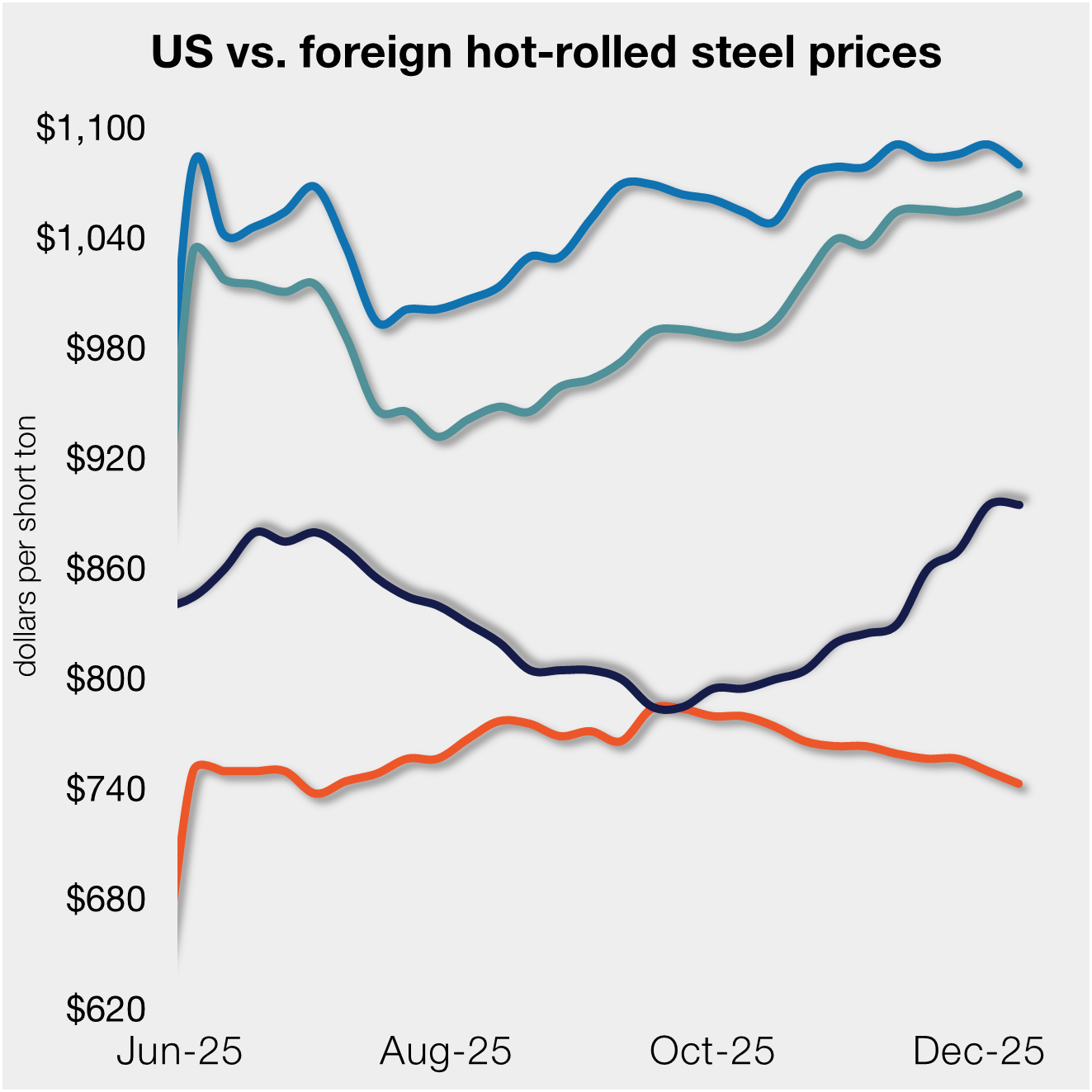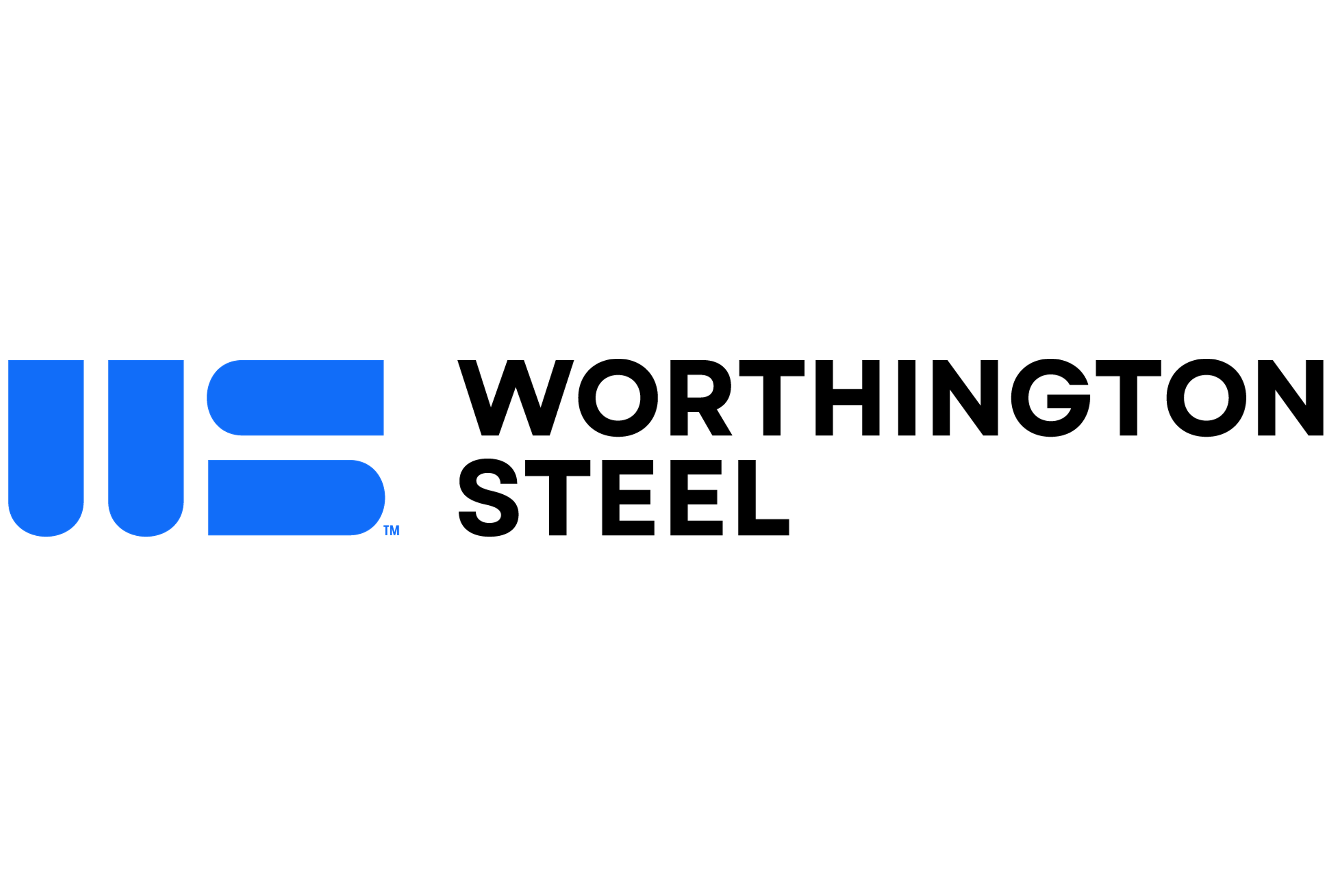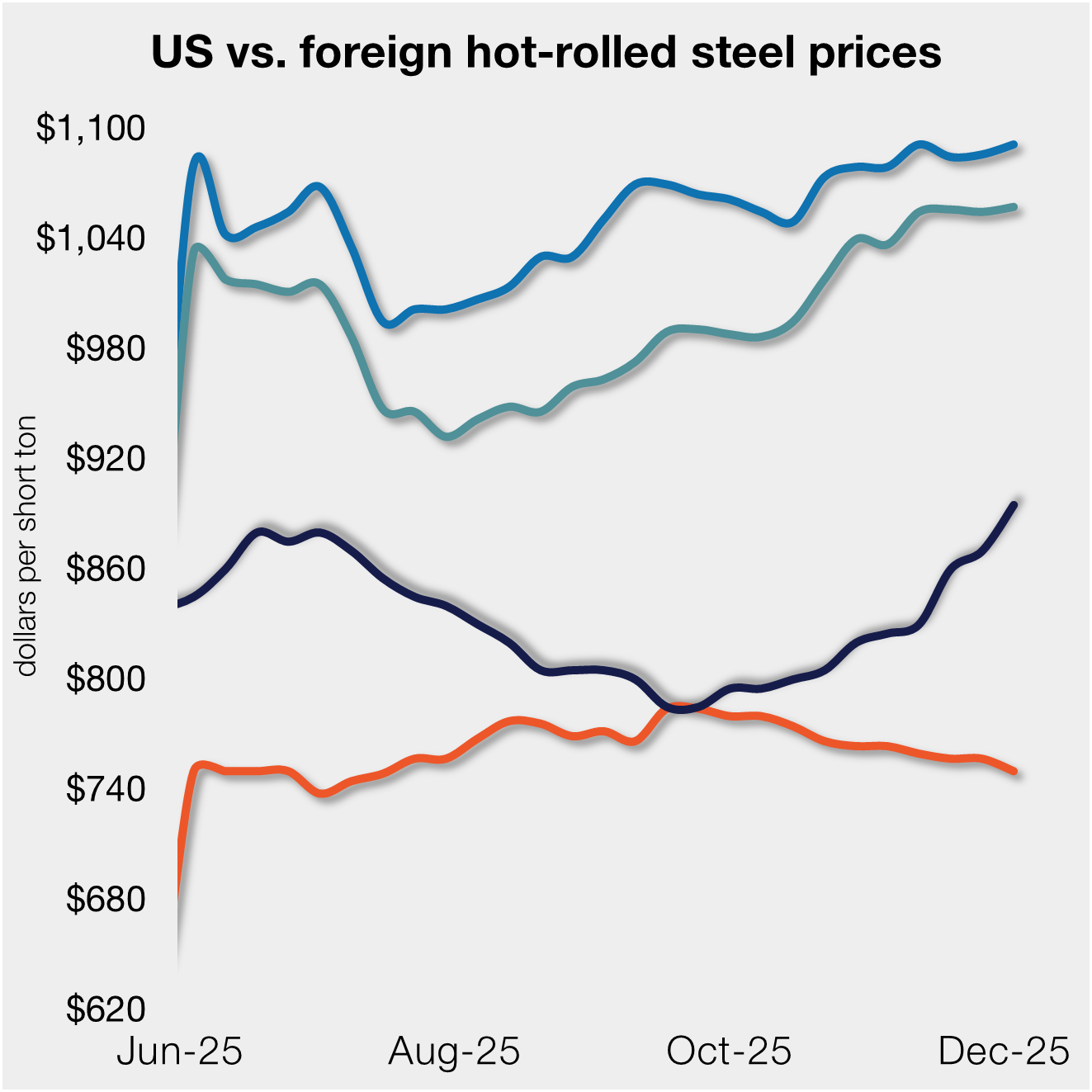Overseas
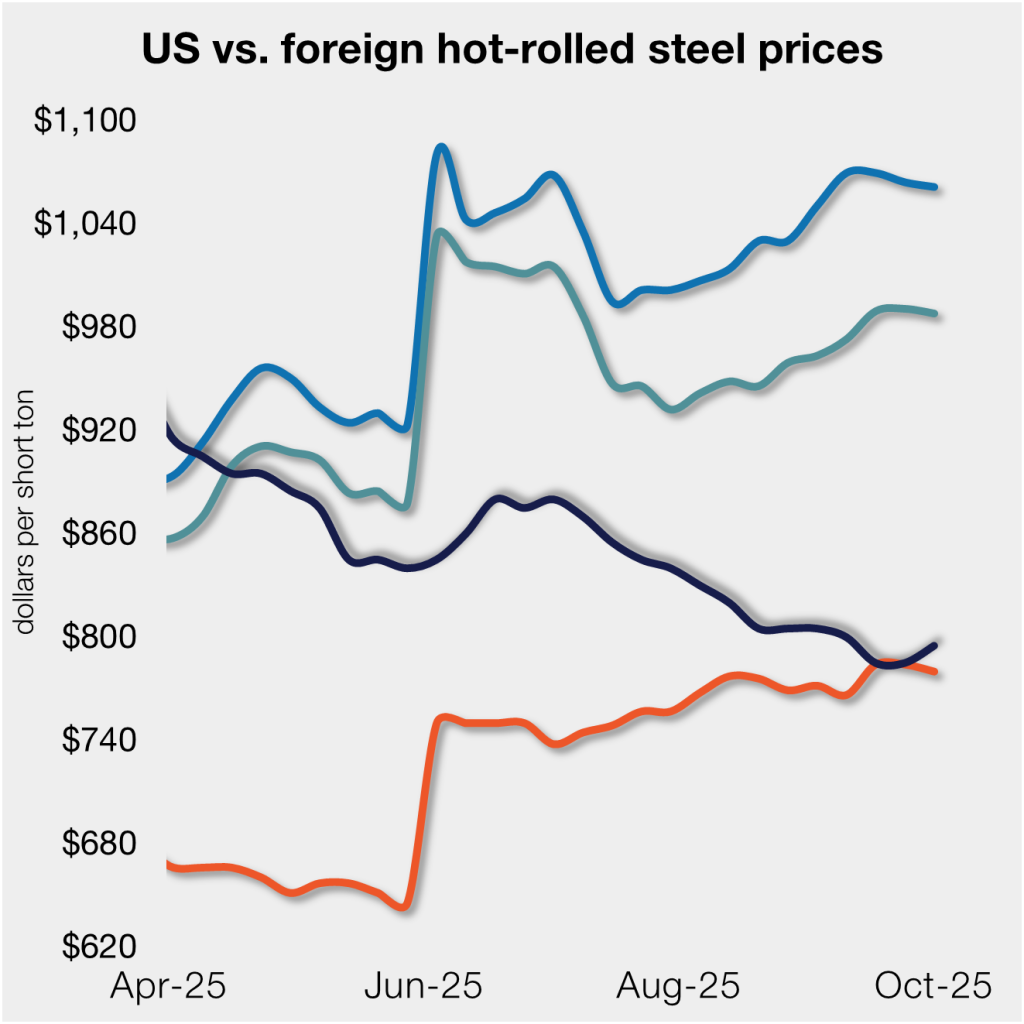
October 3, 2025
Gap between US HR and landed import prices starts to narrow
Written by David Schollaert
SMU’s average price for domestic hot-rolled (HR) coil was $795 per short ton (st) this week, up $10/st week on week (w/w). The move was different in offshore markets last week, as prices ticked down marginally.
The dynamic narrowed the price gap between stateside hot band and offshore product, on a landed basis. Still, with the 50% Section 232 tariffs, imports remain much more expensive than domestic material.
In dollars-per-ton terms, US product is on average $148/st less than landed import prices (inclusive of tariffs). The gap is down from $161/st w/w.
The charts below compare HR prices in the US, Germany, Italy, and Asia. The left side highlights prices over the last two years. The right side zooms in to show more recent trends.
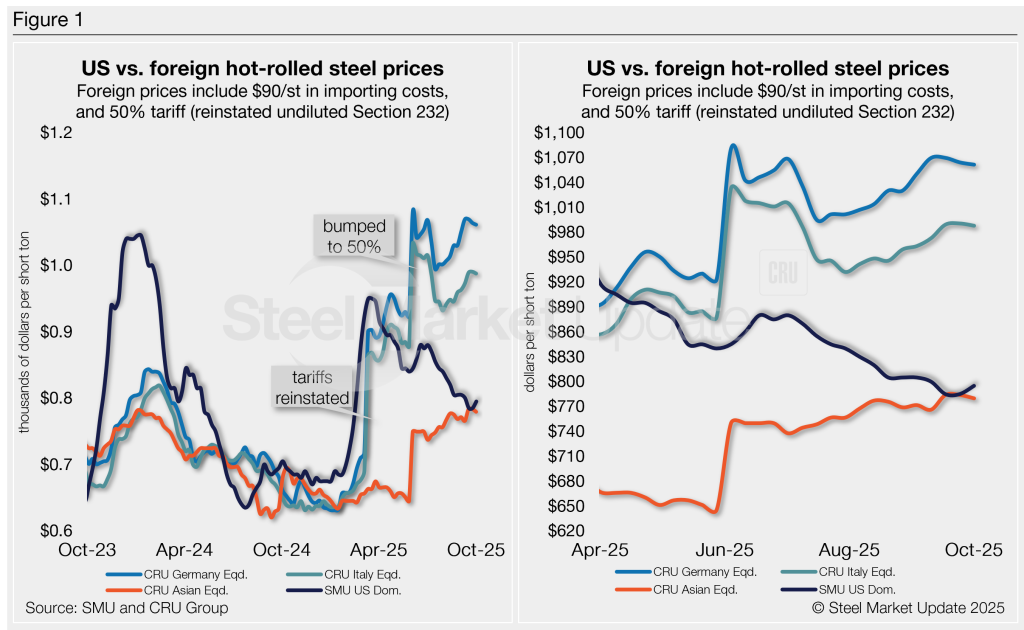
Methodology
SMU calculates the theoretical spread between domestic (FOB mill) and foreign (delivered to US ports) HR coil prices. We do this by comparing our weekly US HR assessment to CRU’s weekly HR indices for Germany, Italy, and Southeast Asian ports. This calculation is purely theoretical. Actual import costs can vary significantly and affect the true market spread.
To estimate the CIF price at US ports, we add a $90/st charge to all foreign prices to account for freight, handling, and trader margins, along with the 50% S232 tariff. This $90/st figure serves as a general benchmark. Buyers should adjust it based on their specific shipping and handling expenses.
If you import steel and have insights on these costs, we’d love to hear from you. Contact the author at david@steelmarketupdate.com.
Asian HRC (Southeast Asian ports)
As of Wednesday, Oct. 1, the CRU Asian HRC price was $460/st, down $3/st from the week before. Adding a 50% tariff and $90/st in estimated import costs, the delivered price of Asian hot band to the US is ~$780/st. As noted above, the latest SMU US HR price is $795/st on average.
The result: Prices for US-produced HR are theoretically $15/st above steel imported from Asia — a marginal shift w/w when stateside tags were even with Asian imports on a landed basis.
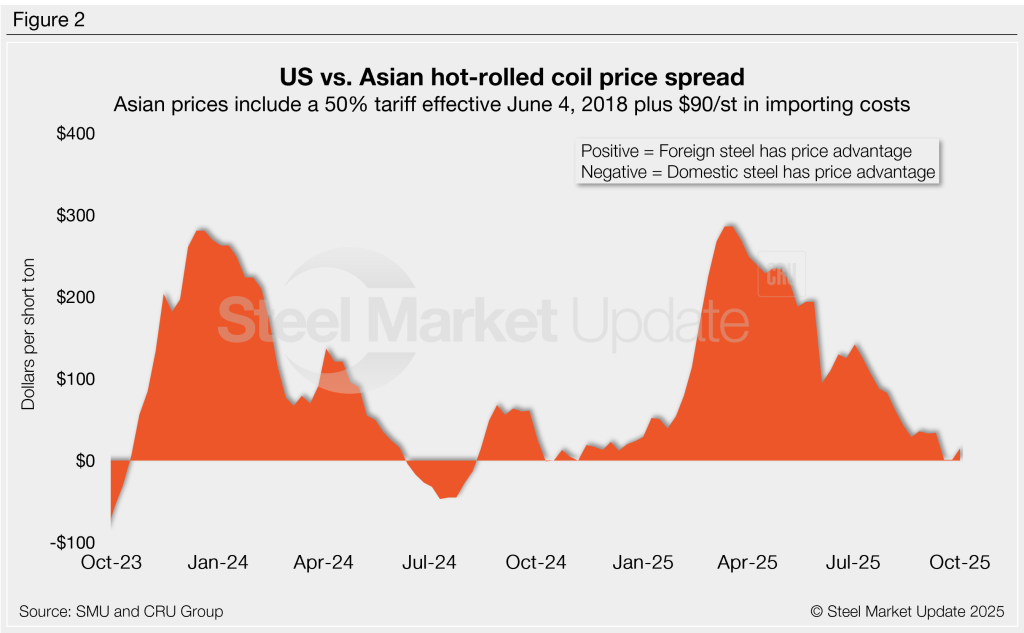
Italian HRC
Italian HR prices were just $2/st lower this week at $599/st. They are up ~$16/st over the past month, according to CRU. After accounting for 50% S232 tariffs and adding $90/st in estimated import costs, the delivered price of Italian HR is, in theory, $988/st.
That means domestic HR coil is theoretically $193/st cheaper than imports from Italy. Without the 50% tariff, US prices, in theory, would be $106/st above Italian imports.
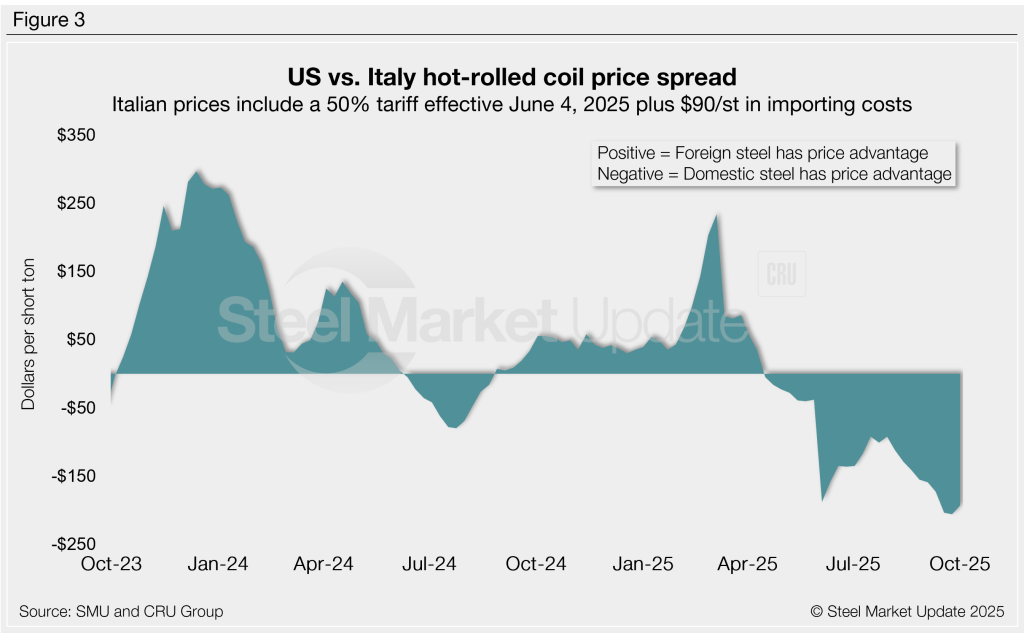
German HRC
CRU’s German HR price was down $2/st this week to $648/st. After adding a 50% tariff and $90/st in import costs, the delivered price of German HR coil is, in theory, $1,062/st.
The result: Domestic HR is theoretically $267/st cheaper than HR imported from Germany.
US hot band was $207/st more expensive than German HR as recently as March. Without the 50% tariff, US prices would, in theory, be $57/st above German imports.
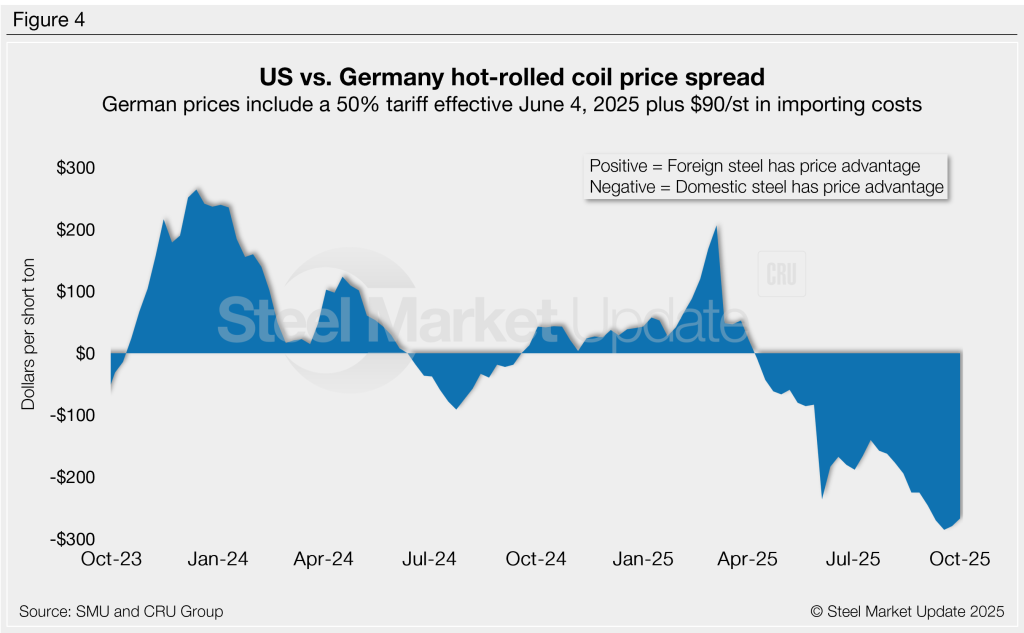
Background
Recall that President Trump implemented across-the-board S232 tariffs of 25% on March 12. He then doubled the S232 tariff to 50% on June 4, which had an immediate impact on the price gap between US prices and those abroad. (See Figure 1.)
Note, too, that before March 12, allies such as Japan and the EU had not been subject to the S232 tariffs. Instead, they had tariff-rate quotas, which allowed them to ship certain volumes to the US with no tariff. There are no longer any TRQs in place under the current Trump tariff regime.
Editor’s note
Freight is important when deciding whether to import foreign steel or buy from a domestic mill. Domestic prices are referenced as FOB the producing mill. Foreign prices are CIF, the port (Houston, NOLA, Savannah, Los Angeles, Camden, etc.). Inland freight, from either a domestic mill or from the port, can dramatically impact the competitiveness of both domestic and foreign steel. It’s also important to factor in lead times. In most markets, domestic steel will deliver more quickly than foreign steel. On March 12, 2025, undiluted Section 232 tariffs were reinstated on steel. All steel imports and many derivative products faced a 25% tariff. Effective June 4, 2025, Section 232 tariffs were increased to 50%. We do not include any antidumping (AD) or countervailing duties (CVD) in this analysis.




